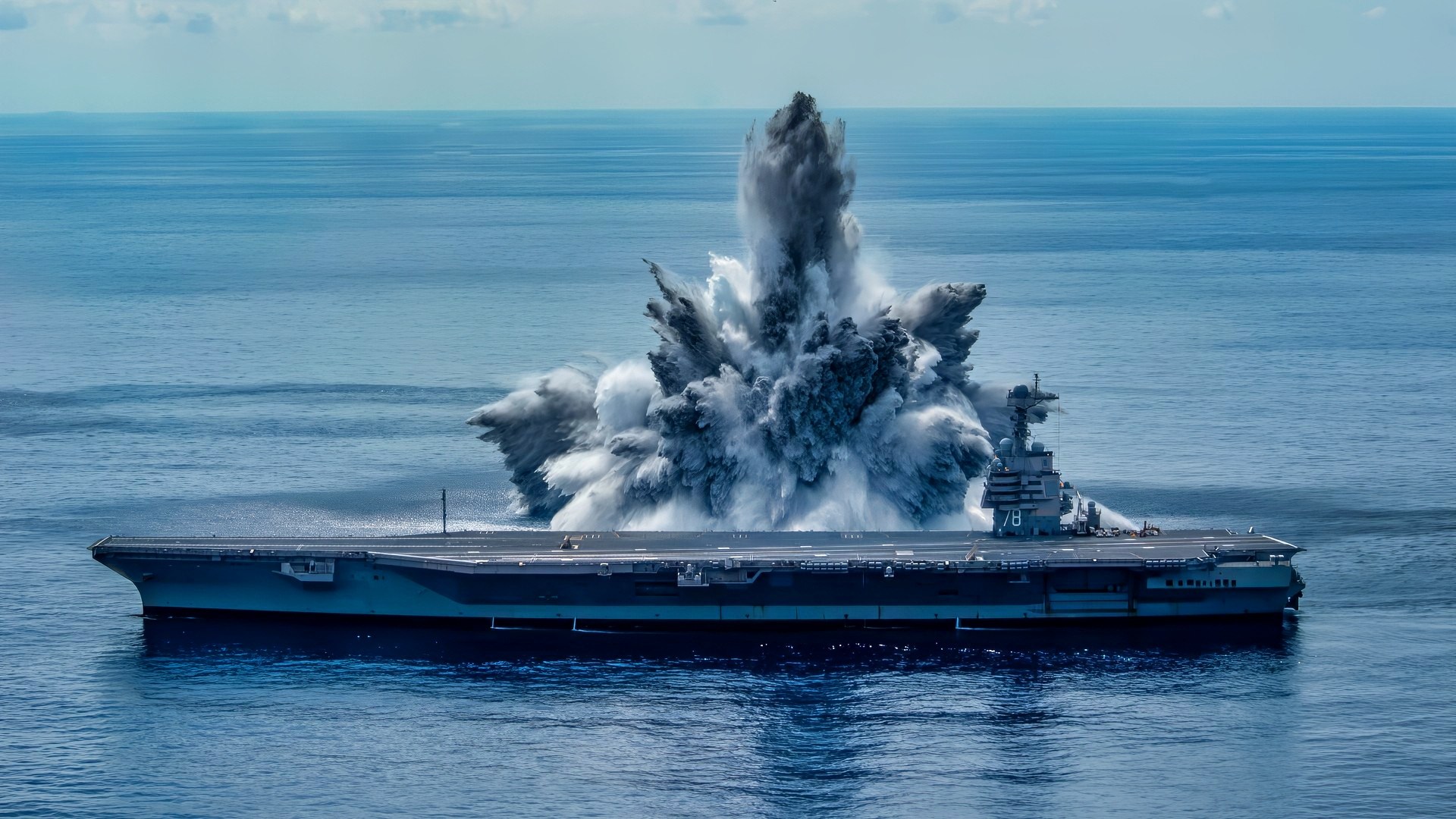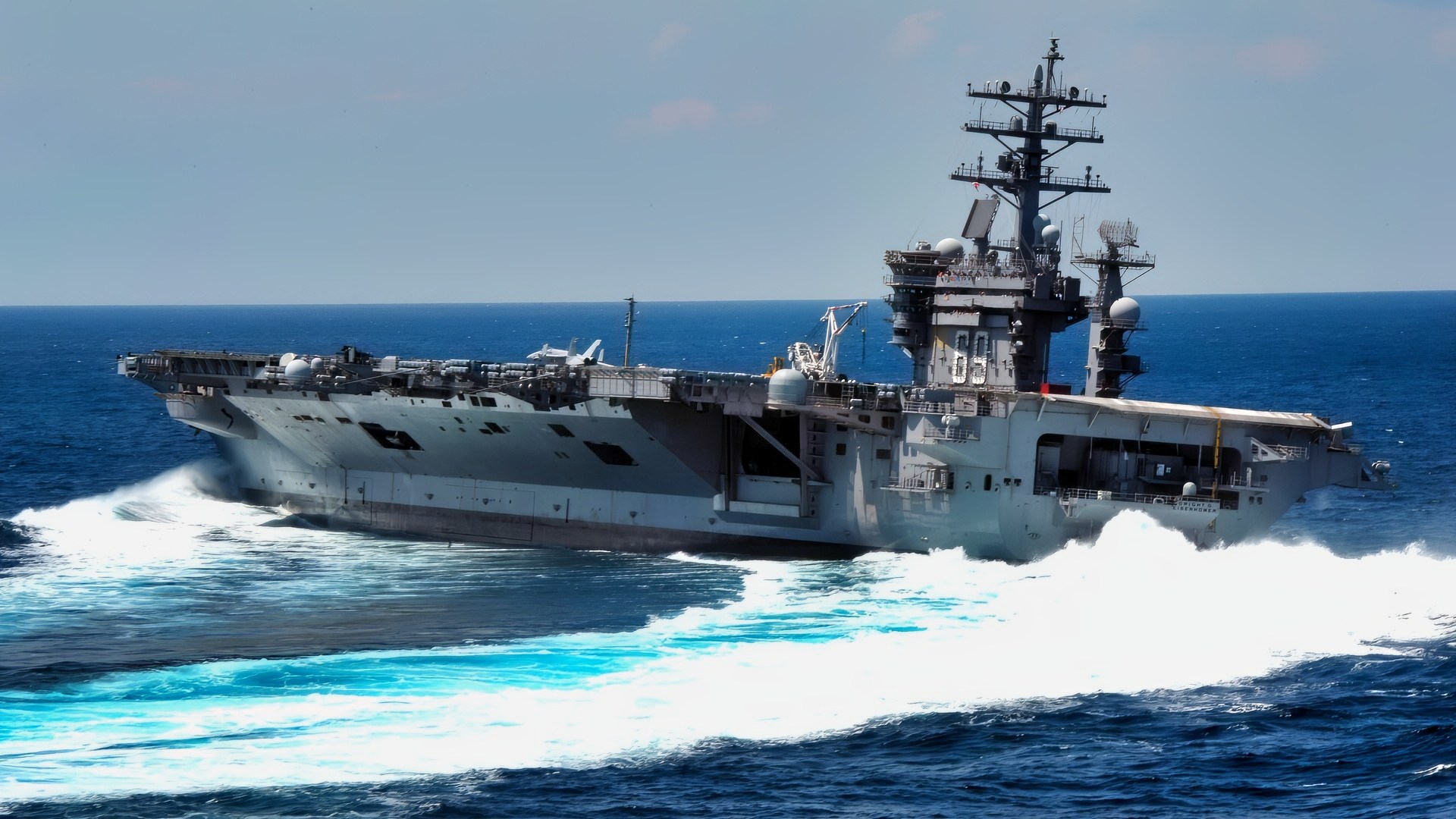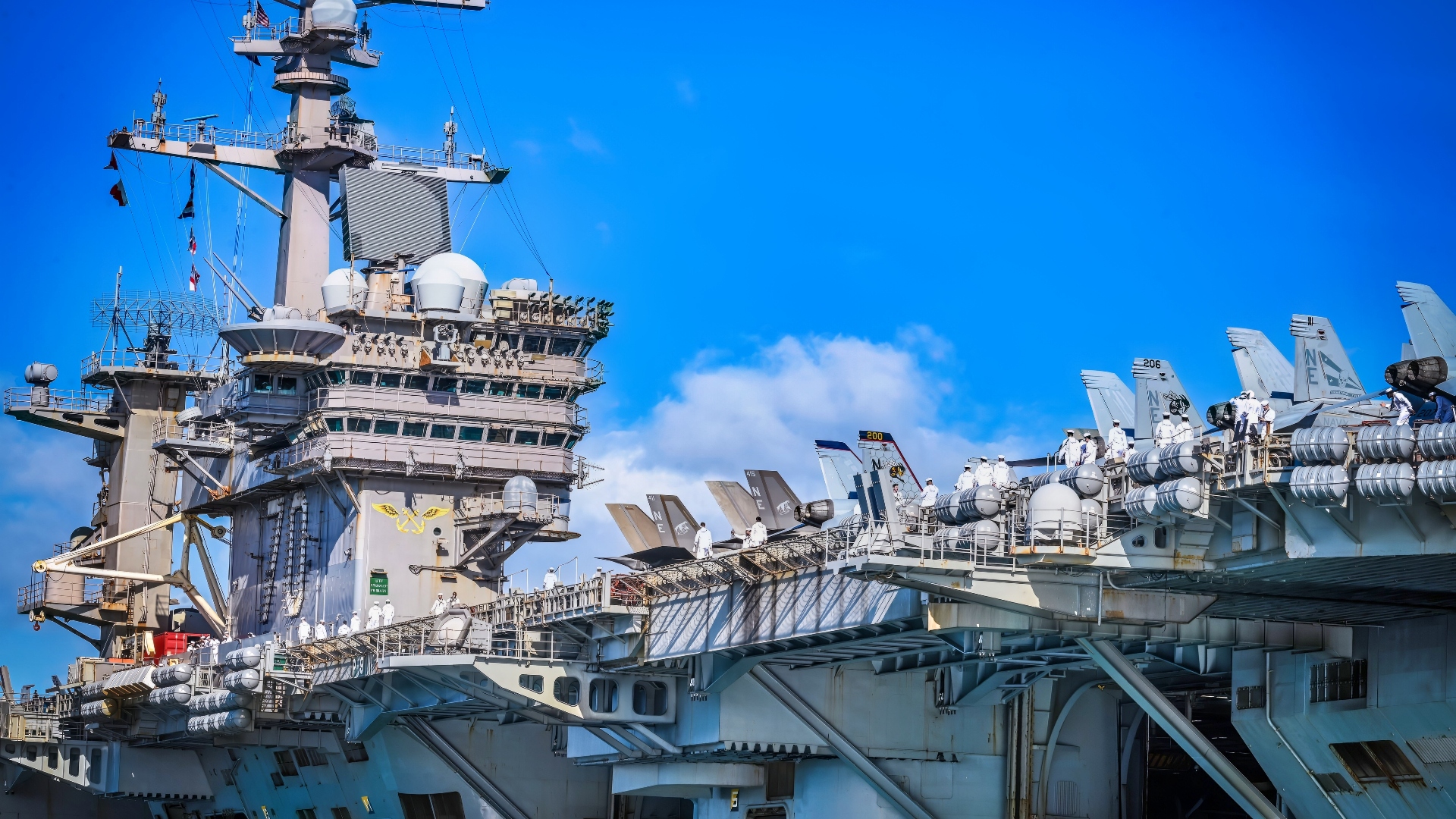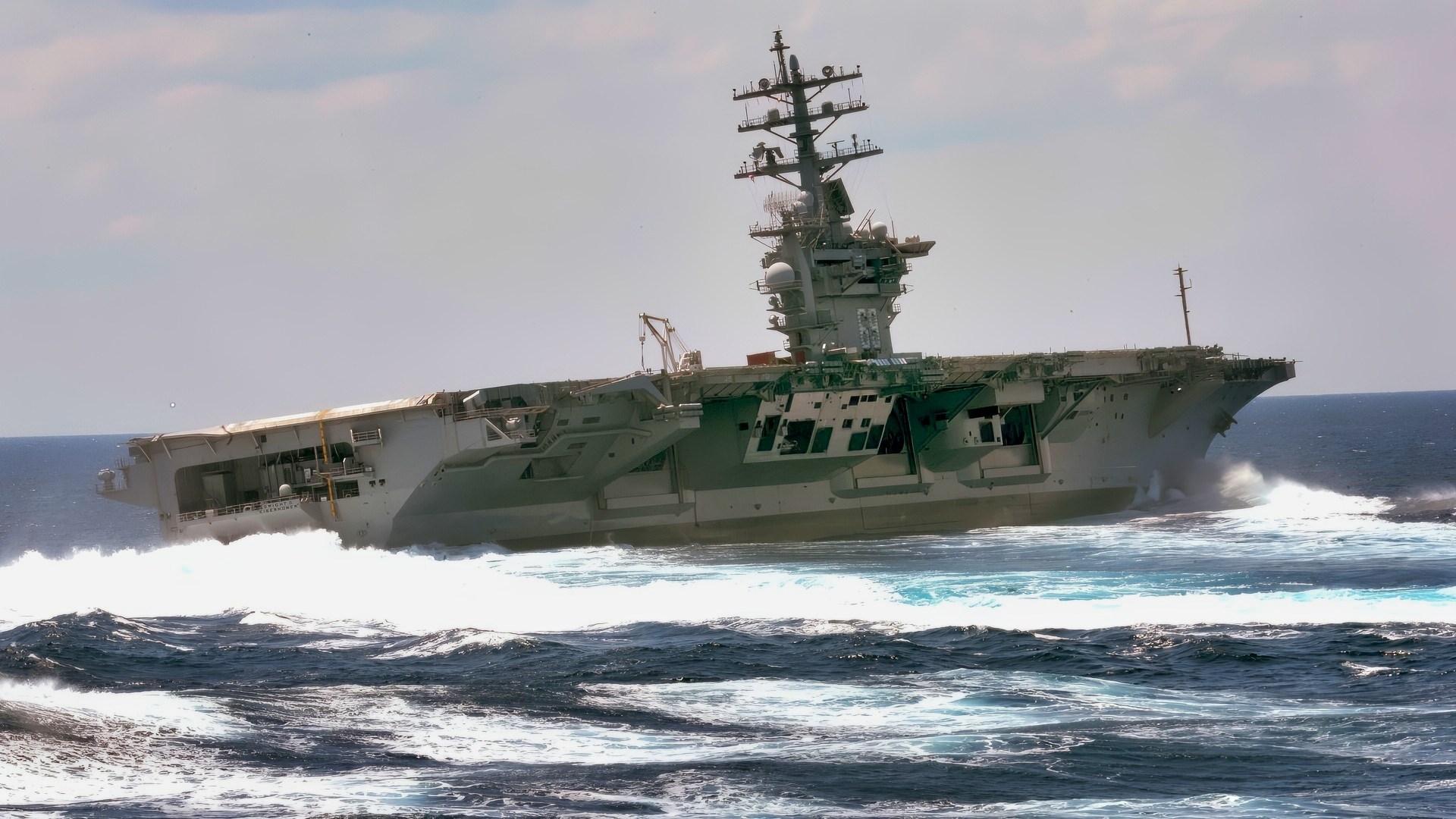Key Points and Summary – While Iranian-backed Houthi rebels have launched numerous anti-ship missiles toward U.S. and allied warships in the Red Sea, the likelihood of them successfully hitting a U.S. aircraft carrier is extremely low.
-Houthi capabilities rely entirely on Iranian support.

The aircraft carrier USS Gerald R. Ford (CVN 78) successfully completes the third and final scheduled explosive event of Full Ship Shock Trials while underway in the Atlantic Ocean, Aug. 8, 2021. The U.S. Navy conducts shock trials of new ship designs using live explosives to confirm that our warships can continue to meet demanding mission requirements under harsh conditions they might encounter in battle. (U.S. Navy photo by Mass Communication Specialist 3rd Class Novalee Manzella)
-U.S. carriers operate within a formidable Carrier Strike Group, protected by multiple layers of defense including escort warships equipped with Aegis combat systems, advanced interceptor missiles (SM-2, SM-6, ESSM, RAM), close-in weapon systems (CIWS), electronic warfare, and the carrier’s own air wing.
-These robust, integrated defenses make a successful Houthi strike highly improbable.
Could Houthi Missiles Have Hit A Navy Aircraft Carrier?
The aftermath of the US and Israel flattening of Iran’s air defenses and nuclear facilities, as well as some Houthi rebel missile launching sites, has seen a lessening of attacks in the Red Sea.
One main factor of that was that Iran was arming the Houthis with their missiles, yet another proxy of Tehran’s that has been left in the lurch with little to no money forthcoming for missiles, rockets, and other arms since Tehran was hit with massive airstrikes.
But the Houthis launched many missiles at US Navy and Royal Navy ships in the Red Sea, without success, although reportedly there were a few near misses. Could the Houthis actually hit a US aircraft carrier?
What Are The Odds That Houthi Missiles Could Hit A US Carrier
The Houthis cannot manufacture advanced ballistic missiles; their missiles came from Iran. Iran also provided intelligence to help the Houthis target merchant ships.
“We know that Iran was deeply involved in planning the operations against commercial vessels in the Red Sea,” White House national security spokesperson Adrienne Watson said in December 2023.
“This is consistent with Iran’s long-term material support and encouragement of the Houthis’ destabilizing actions in the region.”

The Nimitz-class aircraft carrier USS Dwight D. Eisenhower conducts rudder turns during sea trials. Dwight D. Eisenhower completed a nine-month planned incremental availability at Norfolk Naval Ship Yard on June 10, 2011.
Iran has played a crucial role in enhancing the Houthis’ anti-ship capabilities. Since 2015, the Houthis have received more advanced Iranian-made missiles, such as the Noor (C-802) and the Khalij Fars (Persian Gulf), an anti-ship variant of the Fateh-110 ballistic missile. These missiles have significantly improved the range, accuracy, and lethality of Houthi attacks.
The Houthis tried to spread the rumor that their missiles hit and sank the USS Eisenhower off the coast of Yemen. That was quickly debunked; however, it also raised the issue of what anti-ship missiles the Houthis/Iran possess and how effective they are.
US/UK/ French Defenses on Ships Off Yemen
During a seven-month deployment to the region in early 2024, the US Arleigh Burke-class destroyer USS Carney was involved in 51 engagements, including several against Anti-ship ballistic missiles (ASBMs). The US Navy expended at least 120 SM-2 missiles and 80 of the faster and more expensive SM-6 missiles during the fight with the Houthis, with the latter most likely used against the ASBM threat.
European ships also played a role. HMS Diamond, a Royal Navy Type-45 destroyer, intercepted a ballistic missile. At the same time, the French FREMM frigate Alsace shot down three, using Aster missiles (known as Sea Viper in Royal Navy service).
Israeli, British, and US air strikes against Houthi missile infrastructure, port facilities, and leadership targets did not stop the attacks, even though US President Trump announced a ceasefire in May 2025.
Carriers Have Layered, Tough Defenses
While a Houthi missile has come very close to a US carrier, it has not hit one. While Houthi weapons are a threat, the likelihood of a direct hit on a carrier is low due to the U.S. Navy’s multi-layered defenses, which include escort ships and close-in weapon systems, as well as the carrier’s own sophisticated defensive capabilities.

The Nimitz-class aircraft carrier USS Carl Vinson (CVN 70) arrives in Joint Base Pearl Harbor-Hickam, Hawaii, for a scheduled port visit, July 30, 2025. Vinson, the flagship of Carrier Strike Group ONE, is underway conducting routine operations in the U.S. 3rd Fleet area of operations. (U.S. Navy photo by Roann Gatdula)
Carriers are not lone wolves; they operate as part of a Carrier Strike Group (CSG) that includes guided missile cruisers, destroyers, and submarines.
These escort ships provide additional layers of defense and enhance the overall survivability of the carrier. The CSG’s integrated defense network ensures that any threat must penetrate multiple layers of protection before reaching the carrier.
The carriers themselves, as in the Nimitz and Ford classes, are heavily protected and are arguably the most protected warships in the world.
The Aegis Combat System, working in conjunction with the SPY-1 radar, provides advanced detection and tracking capabilities. It can engage multiple targets simultaneously and is a critical component of the carrier’s defense against missile threats.
Carriers are equipped with a plethora of surface-to-air missile systems, such as the RIM-162 Evolved SeaSparrow Missile (ESSM) and the RIM-116 Rolling Airframe Missile (RAM). These missiles are designed to intercept and destroy incoming missiles and aircraft.
The Phalanx CIWS is an automated gun system that provides close-in defense against incoming missiles and aircraft. It uses radar-guided 20mm Gatling guns to engage and destroy threats rapidly.
Carriers are also equipped with advanced EW systems that can jam or deceive incoming missiles, reducing their effectiveness. Additionally, carriers deploy various decoys and countermeasures, such as chaff and flares, to confuse and divert incoming missiles.
American carriers also have 90 aircraft that can be used in an anti-missile mode or air defense mode.
While the US would never discount the Houthis’ Iranian-made missiles, the robust air defenses of the US carrier strike groups make it extremely unlikely that they would generate a strike, let alone sink a US aircraft carrier.
About the Author: Steve Balestrieri
Steve Balestrieri is a National Security Columnist. He served as a US Army Special Forces NCO and Warrant Officer. In addition to writing on defense, he covers the NFL for PatsFans.com and is a member of the Pro Football Writers of America (PFWA). His work was regularly featured in many military publications.
More Military
China’s New Aircraft Carrier Has 1 Big Advantage over the U.S. Navy
The B-21 Raider Stealth Bomber Has a New Problem: The Government Shutdown
The B-1B Lancer Bomber Has a Message for the Air Force
The B-2 Spirit Bomber Has 1 Big Advantage over Russia and China
Nuclear Aircraft Carrier USS Nimitz Will Be Retired Next Year: It Might Be a Big Mistake










